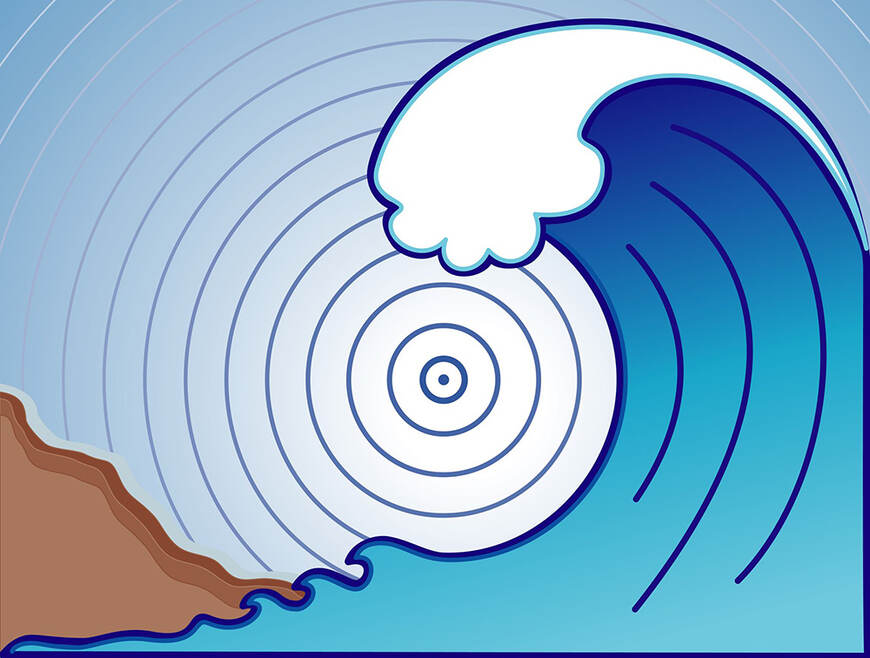Tsunami
A tsunami is a powerful and destructive wave of water caused by an underwater earthquake, landslide, or volcanic eruption. It is one of the most destructive natural disasters in the world and can cause massive destruction and loss of life.
Tsunamis are caused by the sudden displacement of a large body of water, usually due to an earthquake or volcanic eruption. When an earthquake occurs, the seafloor is suddenly thrust upward or downward, displacing a huge amount of water. This displacement causes a wave of water to travel across the ocean at speeds of up to 500 miles per hour. As the wave approaches the shore, it builds in height and strength, eventually crashing onto land with devastating force.
The destruction caused by a tsunami can be immense. It can wipe out entire villages, destroy buildings, bridges, and roads, and cause massive flooding. Tsunamis also create huge waves that can travel for miles inland, flooding coastal areas and causing extensive damage.
Tsunamis can occur anywhere in the world, but the most devastating ones have occurred in the Pacific Ocean. In 2004, an earthquake off the coast of Sumatra, Indonesia, triggered a tsunami that killed over 230,000 people in 14 countries. In 2011, an earthquake off the coast of Japan caused a tsunami that killed over 15,000 people and caused a nuclear disaster.
Because of the potential destruction caused by tsunamis, it is important to be prepared. People living in coastal areas should become familiar with tsunami warning systems and evacuation plans. It is also important to be aware of the signs of an approaching tsunami, such as a sudden rise or fall in sea level, or an unusual roar or rumble. If you are in
Tsunamis are caused by the sudden displacement of a large body of water, usually due to an earthquake or volcanic eruption. When an earthquake occurs, the seafloor is suddenly thrust upward or downward, displacing a huge amount of water. This displacement causes a wave of water to travel across the ocean at speeds of up to 500 miles per hour. As the wave approaches the shore, it builds in height and strength, eventually crashing onto land with devastating force.
The destruction caused by a tsunami can be immense. It can wipe out entire villages, destroy buildings, bridges, and roads, and cause massive flooding. Tsunamis also create huge waves that can travel for miles inland, flooding coastal areas and causing extensive damage.
Tsunamis can occur anywhere in the world, but the most devastating ones have occurred in the Pacific Ocean. In 2004, an earthquake off the coast of Sumatra, Indonesia, triggered a tsunami that killed over 230,000 people in 14 countries. In 2011, an earthquake off the coast of Japan caused a tsunami that killed over 15,000 people and caused a nuclear disaster.
Because of the potential destruction caused by tsunamis, it is important to be prepared. People living in coastal areas should become familiar with tsunami warning systems and evacuation plans. It is also important to be aware of the signs of an approaching tsunami, such as a sudden rise or fall in sea level, or an unusual roar or rumble. If you are in



Yorumlar
Yorum Gönder